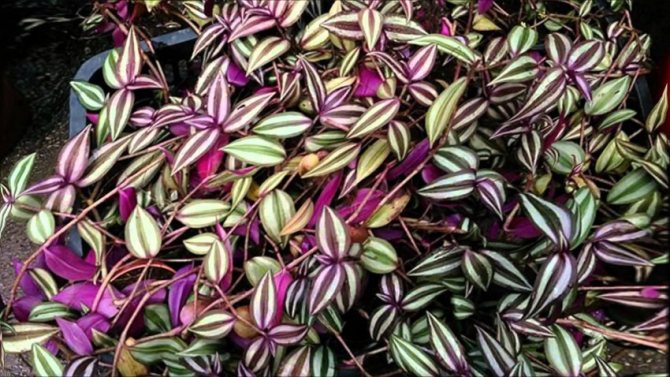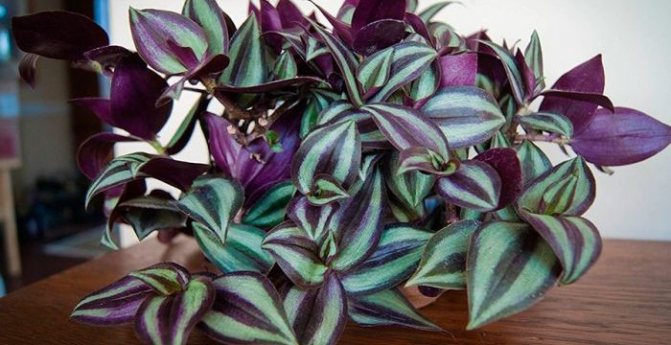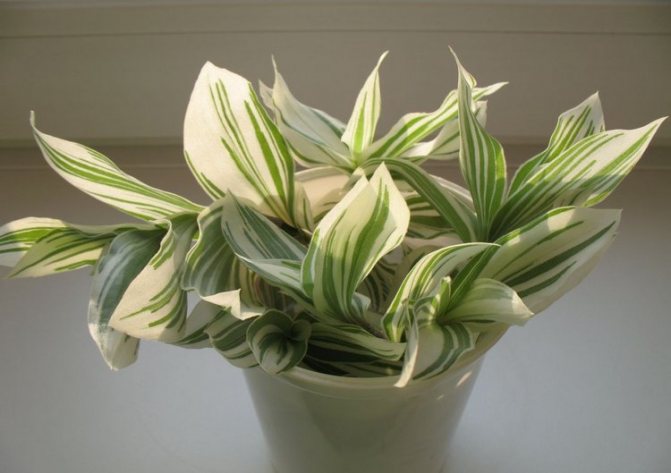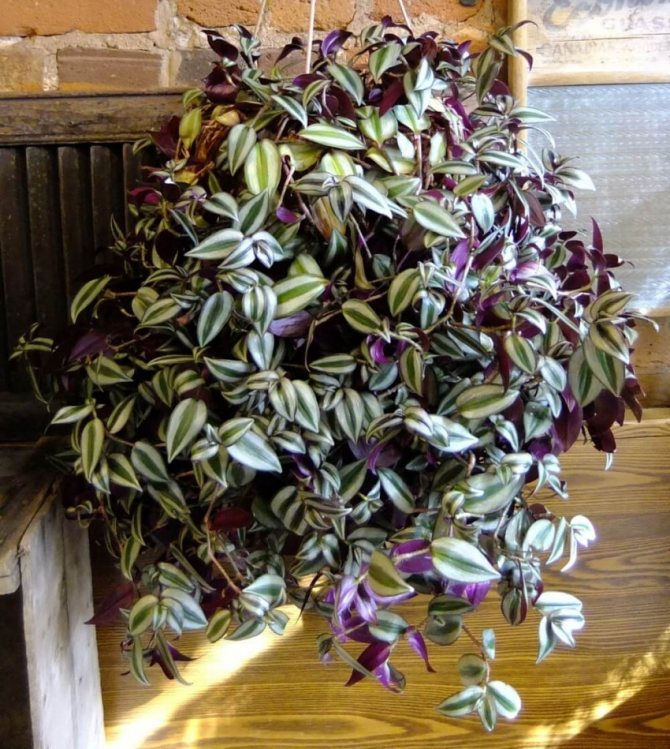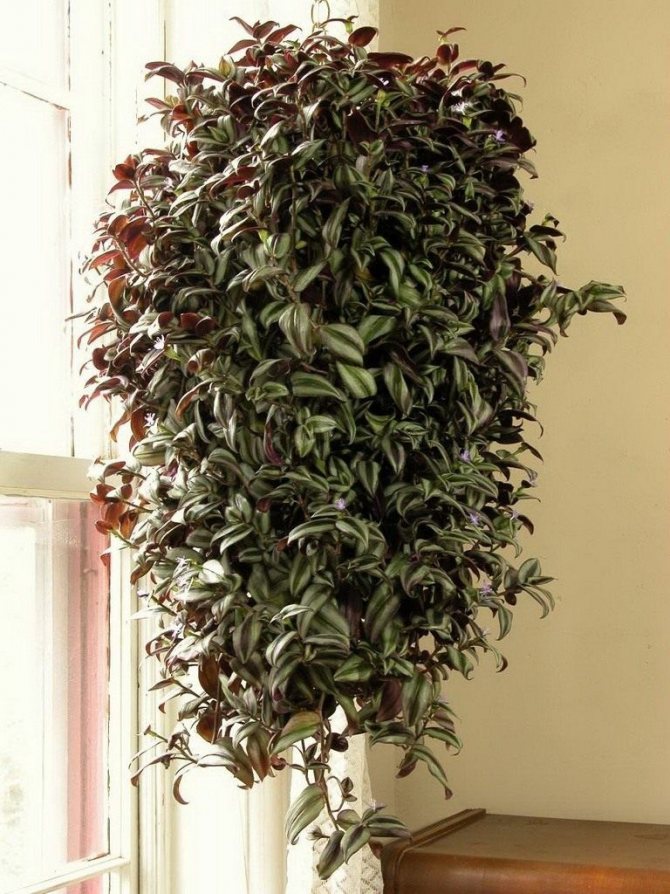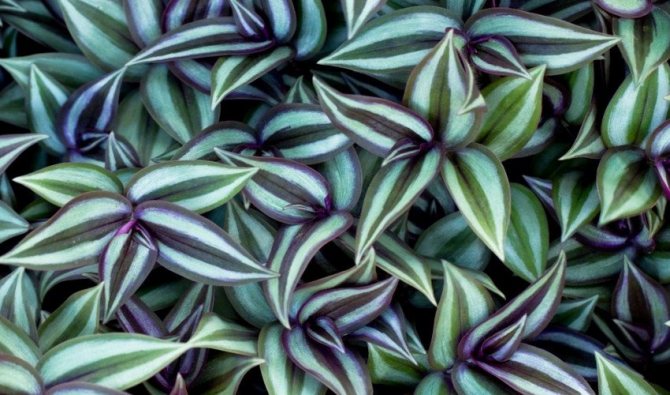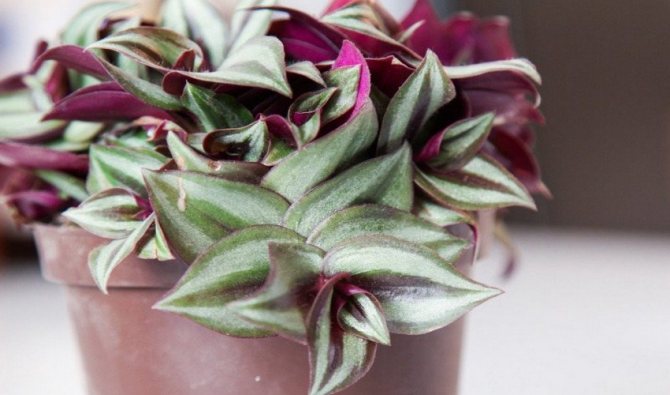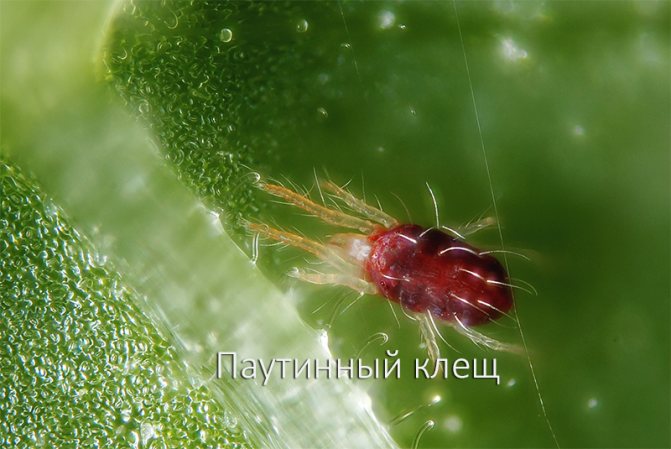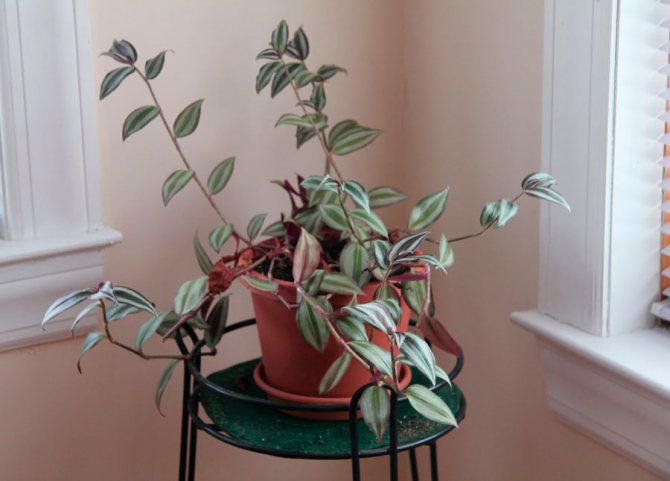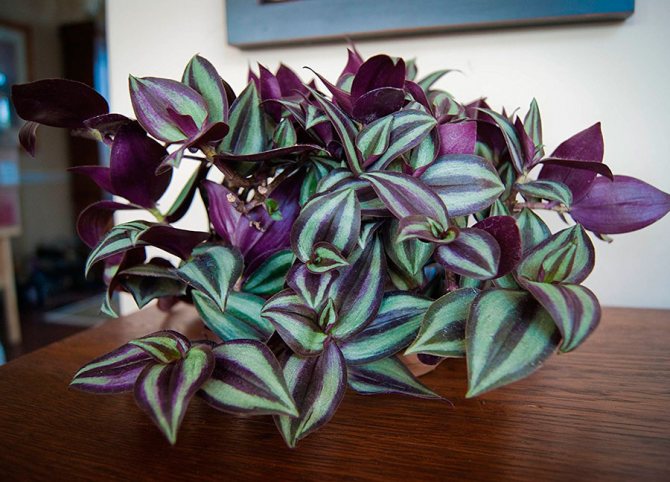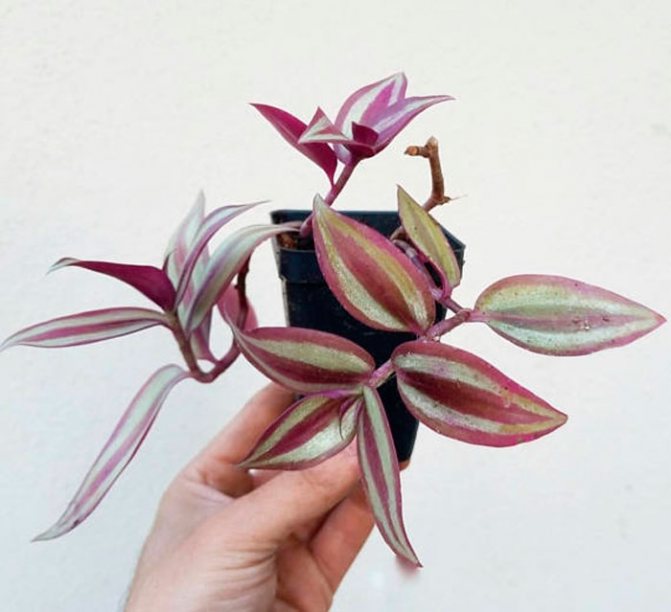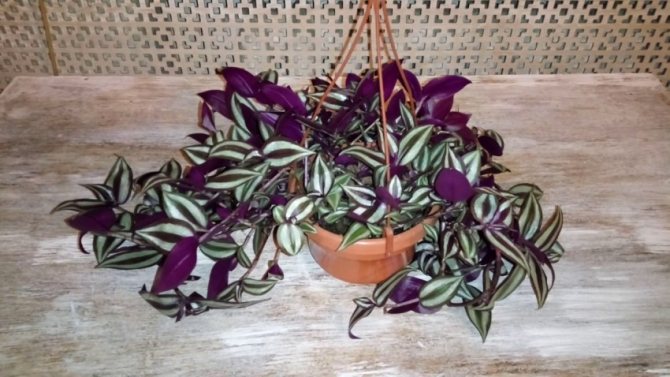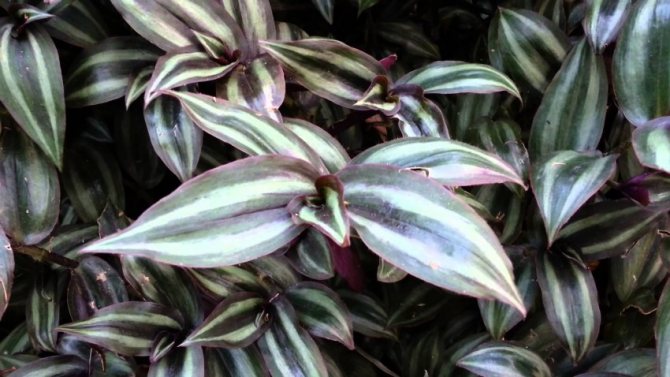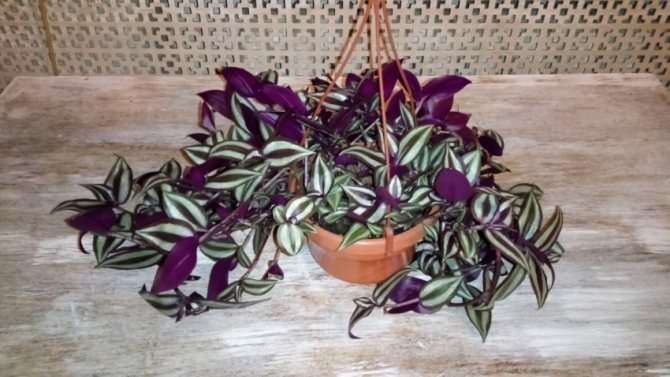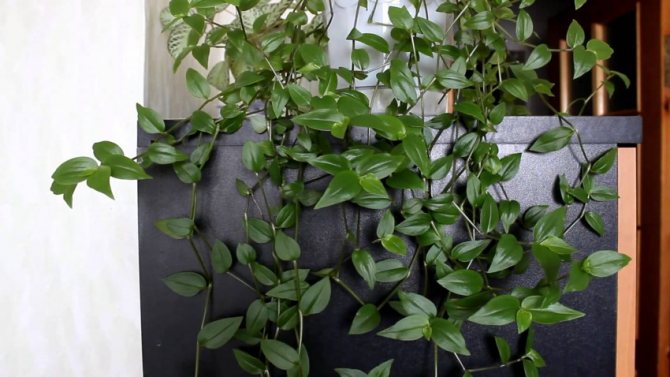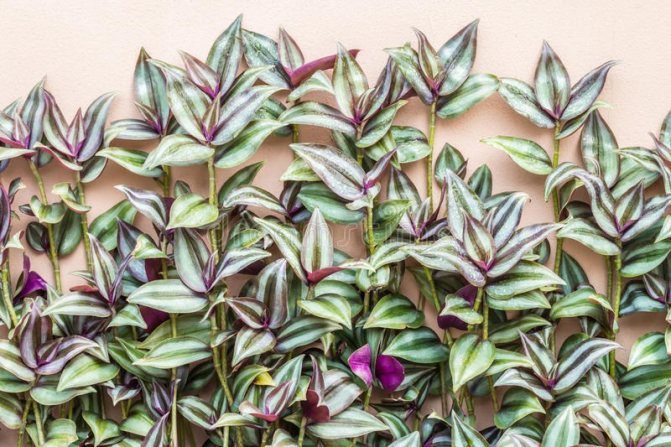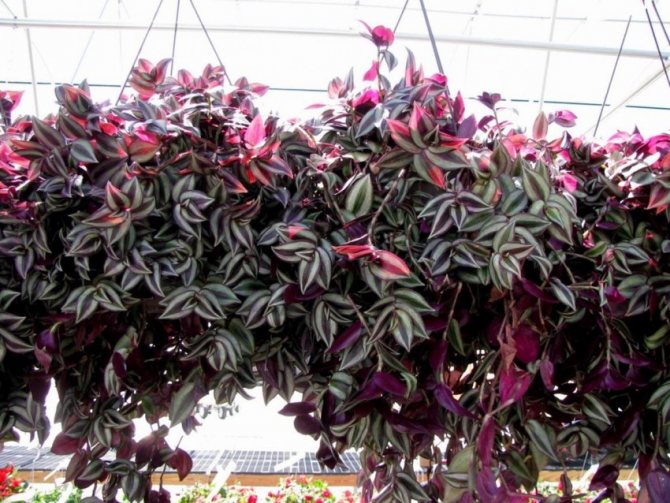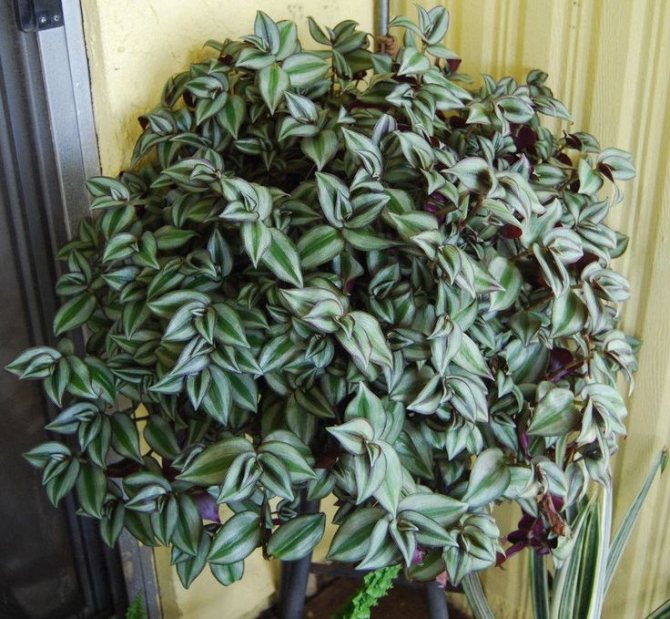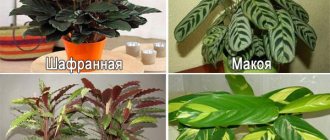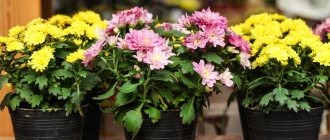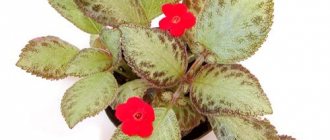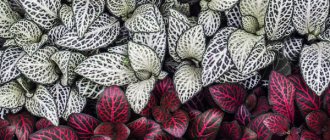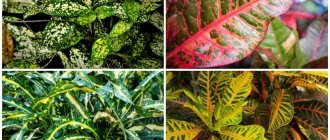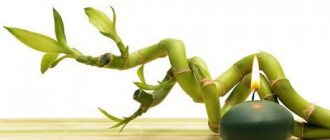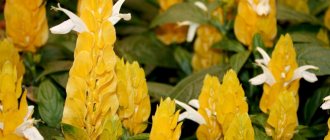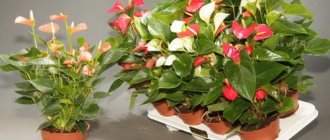Zebrina - a very beautiful decorative leafy ampelous plant that came to us from Central America and Mexico. Not so long ago, Zebrina was one of the most popular indoor floriculture crops. Unfortunately, now this plant is undeservedly forgotten and is not often found in our homes. The time has come to revive the former popularity of the zebrin, because it is not only a very beautiful, but also a useful home plant.
When a zebrina is young, its shoots have an erect appearance, but then they grow back and fall under their own weight. Cascading shoots resemble a lush and seething waterfall, therefore zebrina is used for zoning or decorating rooms, loggias, gazebos, window and doorways, and creating flower arrangements. It is also grown as a ground cover, covering the ground with a dense carpet due to the branching of the stem and strong rooting in the nodes.
The plant owes its name to the color of the leaves, whose longitudinal green, pale green, white, red or silver stripes resemble the color of a zebra (zebrinus from Lat. - striped). The shape of the leaves can be oval or ovoid oblong with pointed tips up to 5 - 10 cm in length, and the lower smooth side has a purple color. In varieties bred by breeders, the width of the stripes is different.
Zebrin belongs to the commeline family. Many people confuse this plant with the well-known Tradescantia, to the genus of which it belonged until recently. But some features of the zebrin, for example, the original color of the leaves, made it possible to distinguish it into a separate genus, including 4 species.
Zebrina is a perennial plant, but rarely blooms. From April to August, small flowers can be observed, and each of them consists of 3 petals of purple, lilac or pink. Zebrina is distinguished from the same Tradescantia by its spiny corolla and calyx.
Caring for Zebrina at home
The family of these plants belongs to tropical species. Therefore, in natural climatic conditions, it spreads in Mexico, America and the Antilles. Here Zebrina decorates winter gardens, windows of houses and greenhouses.
There are plants that, due to their similarity to Tradescantia, have the name Zebrina. Such analogs include: Calathea, Zebrina and Malva Zebrina. It was the variegated color of Zebrina that gave the name to these species. It is also an ornamental plant, but all of its types are absolutely not similar in methods of care, seating, watering, and temperature conditions.
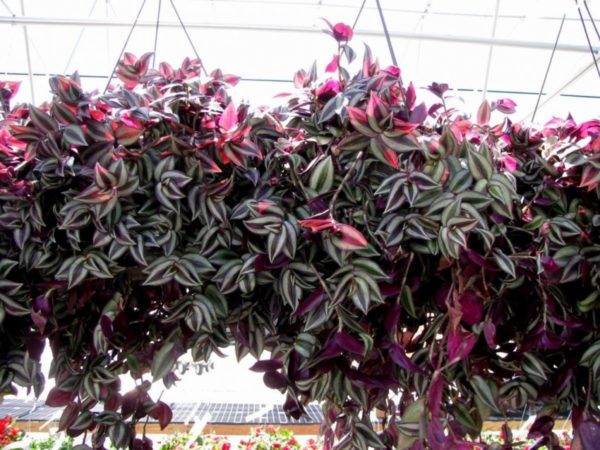
So try not to confuse these types. For example, Zebrina mallow is most often grown from seeds. Usually, two types of this plant are grown at home - hanging Zebrina and Purple Zebrina.
By itself, Zebrina is not only a very beautiful plant. It has a number of useful properties. These include:
- antibacterial effect;
- helps with burns;
- effective for stomach diseases;
- is a natural filter.
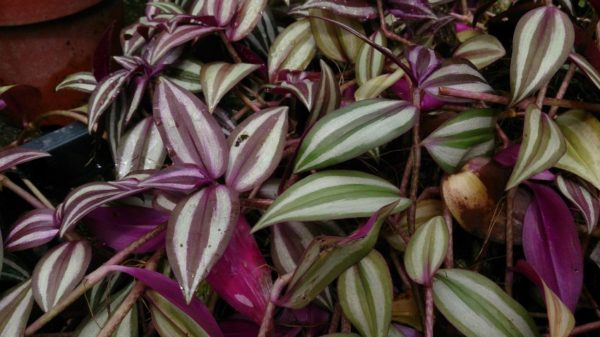

Below you will learn how to properly take care of Zebrina at home.
Zebrina varieties
The most familiar view for us is Zebrina hanging or hanging (Zebrina pendula). Hanging shoots form twists with easy rooting. The leaves are arranged in two rows and have an ovoid shape with an elongated tip. In length, they reach 5 - 6.5 cm, in width - up to 3 cm.The characteristic color of the leaves is two silvery-white stripes on a reddish background on the front side and a purple tint on the bottom. Rare pink flowers are each surrounded by two bracts, which have a whitish shade below, and purple-pink above. This species grows along rivers and on the rocky slopes of Central America and Mexico. Zebrina pendula prefers a tropical rainforest climate.
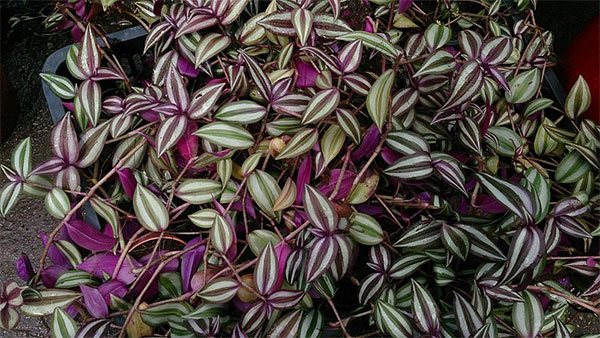

H. hanging
Another popular variety found among indoor crops is Zebrina purple (Zebrina purpusii), a feature of which is the absence of distinct stripes on the leaves. The leaves, like the stem, have the same reddish-olive-green color. The front side is pubescent, below they are naked, purple in color. The length of the leaves is approximately 8-10 cm, and the width is from 3 to 5 cm. Zebrina purpusii is found in the Mexican savannas, on the rocky slopes of the mountains at an altitude of 400-500 meters above sea level. Loves a sunny space, where it perfectly coexists with xerophytes (agaves, bryophyllums, succulent milkweed and others). Like hanging zebrina, purple is an unpretentious and excellent ground cover plant.
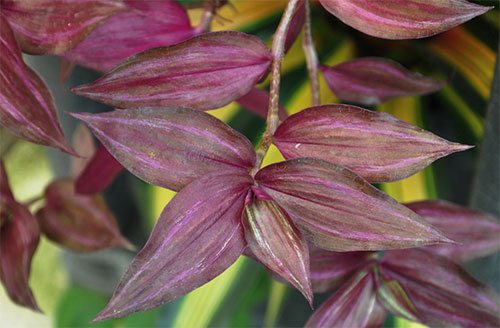

H. purple
Zebrina hanging four-color (Zebrina pendula f. Quadricolor), as the name implies, is distinguished by a riot of leaf color. At the core, they are green with a metallic tint, and frame the central part with green-red and whitish stripes; below the leaves are purple.
You can also mention Zebrin flocculosis (Zebrina flocculosa), which is characterized by soft, whitish, fleecy leaves and bright purple flowers.


H. flocculosis
Location and lighting
Zebrina does not require special care, you just need to observe some subtleties, and then this plant will delight you with its flowering for many years. Even flower growers who have just begun their journey can easily cope with Zebrina.
Liana loves light, but does not tolerate direct sunlight, for this, try to choose a suitable place, the window partition is ideal. Try to give this plant as much space and air as possible. For this, the room should be ventilated daily by saturating it with oxygen.
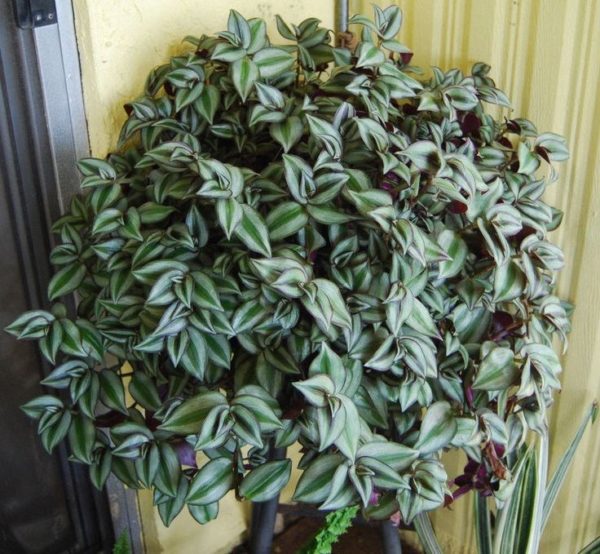

Important! Do not over-water the Zebrina, as too much moisture can trigger root rotting.
It will not be superfluous to plant a flower in the summer on open soil - it will be an excellent decoration for your flower bed and will complement the design of any landscape.
Possible problems
If the room Tradescantia began to look not as usual, then you need to pay attention to care and eliminate mistakes.
- shoots were bare, foliage became rare: the plant lacks water, nutrients;
- the color of the foliage has lost its variegation: there is little light;
- foliage withers, turns yellow: from lack of moisture;
- leaf tips dry: due to too dry indoor air;
- drooping thinned leaves become watery: the soil is flooded or overdried. With dry soil, watering will save Tradescantia, with prolonged waterlogging, problems with the roots arise. In this case, it is better to cut off the shoots and root them in a new container.


Temperature regime
A comfortable temperature regime for tradescantia will be from +20 to +24 C. Also, in the cool autumn-winter period, it can withstand up to +130 C, but not lower. Try to water and spray the plant regularly.
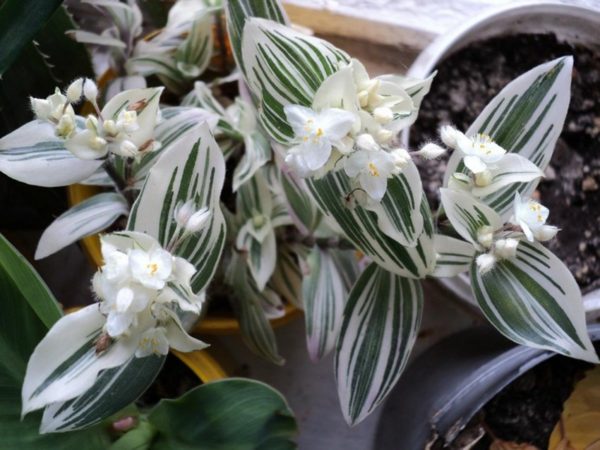

The period of activity falls in the spring and summer, at which time Zebrina grows and gains mass. The opposite is the winter period, the plant requires moderate watering, a comfortable temperature and proper care.
Botanical description
Zebrina is a tropical perennial flowering plant of the Orchid family. In the description of botanical communities, the official name is Phalaenopsis zebrina.The most widespread are the forests of Burma, Mexico and Malaysia.
The branching type is monopodial. The flowering period in the wild is from early spring to late summer. In an artificial environment, flowering is extremely rare. The length of the oval pointed leaf plate of individual specimens reaches 25 cm, the width is 7 cm.
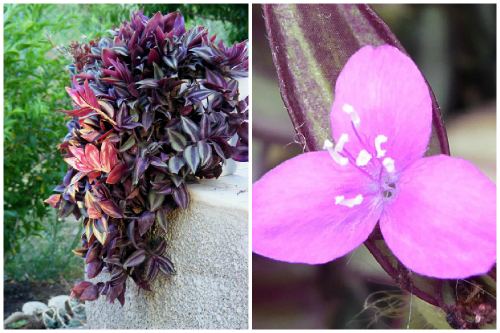

Zebrina juice is identical in composition and properties to aloe and Kalanchoe juice. Due to the high content of phytoncides, it has immunomodulatory, wound healing, antibacterial properties. It is actively used in folk medicine as a medicine in the fight against various diseases. In addition, research has shown the plant's ability to absorb electromagnetic waves.
Watering, feeding and air humidity
This plant prefers moderate watering, since a lot of moisture causes rotting of the roots, little moisture leads to drying out of the leaves. Watering is ideal 2 times a week, and only in the cold winter period - once will be enough. We advise you to use only settled water, since tap water contains a lot of chlorine in its composition, which will negatively affect the development of the plant.
Zebrina is fertilized only when it is in the stage of active growth, that is, in the spring-summer period. It will be useful to use general complex fertilizers 2 times a week.
Interesting: Haworthia: home care, species, reproduction and transplant
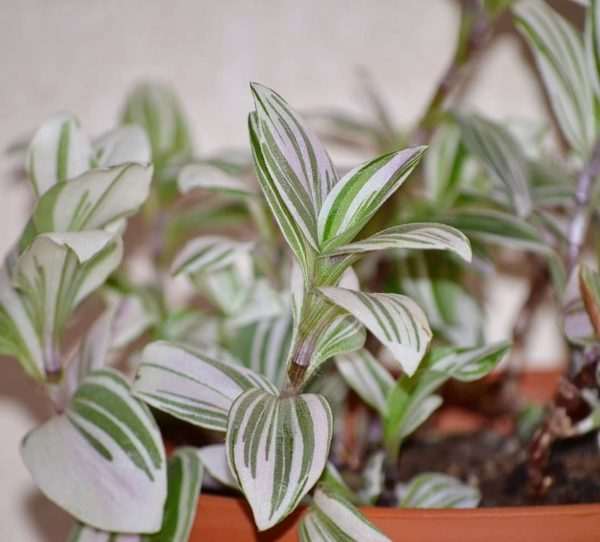

Try to be careful with fertilizers, as they can harm and have a negative impact. It is better not to fertilize plant species that have a variegated color, as they can lose their decorative appearance.
Advice! Feed with full mineral fertilizers, halving the dose.
The optimum moisture content for a plant ranges from 60-70%, but at lower rates, it does not change its decorative appearance. A good way to maintain moisture is to spray the plant with a sprayer to avoid drying out and wilting.
Plant transplant
Zebrina is quite demanding on the quality of the soil. It is better to choose clay and fertile soil. For planting, you can buy a special mineral substrate, or you can do it yourself, for this you need to mix:
- 2 parts of sod land;
- 2 pieces of leafy land;
- 1 part sand.
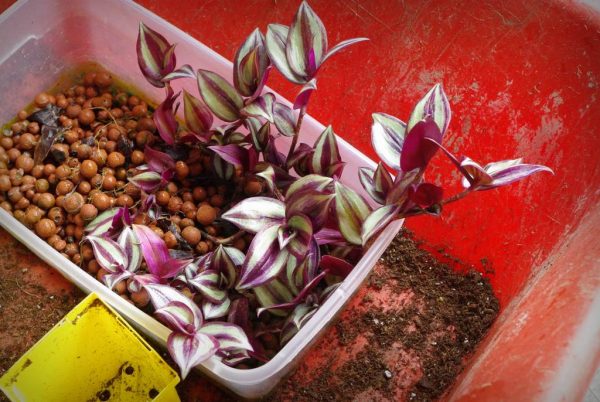

Try to choose a container for planting with a large bottom. Put a layer of expanded clay or chopped foam at the very bottom of the pot. This will be a kind of drainage that will not allow moisture to linger at the roots.
As for the transplant, Zebrina doesn't really need it. Since the lifespan for this plant is not very long, only three years. Then it loses its attractiveness and decorative function. If you create even the most ideal conditions, with a comfortable temperature regime, suitable humidity, soil and fertilizer, you will still not be able to preserve the original appearance of the plant.
Reproduction
Zebrina reproduces in the easiest way, namely vegetatively. It will be enough to choose strong cuttings, cut them and plant them in a pot along the walls. The number of cuttings is 5-6. It is better to give preference to a low pot with a wide bottom. Next comes, short in time, the process of rooting cuttings.
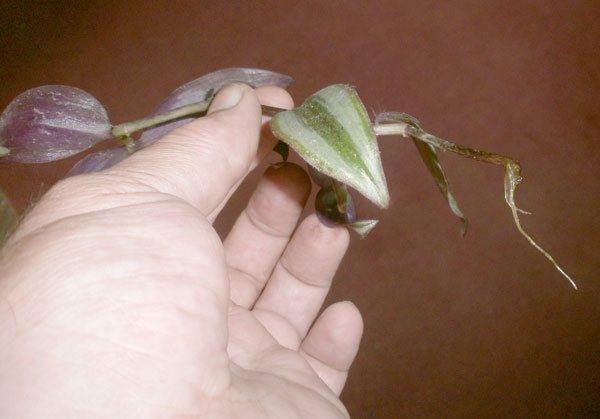

After that, it remains only to plant the cuttings, you can in the ground, or you can try the hydroponics method. An alternative would be to plant it in water, so the plant will reproduce all year round. The grown stems can reach a length of 180 centimeters. Over time, the first open buds will appear, they usually have a purple or pink color and a small size.
Due to the rapid aging of the plant, it must be pruned very often. It is these cuttings that can be used for planting.Choose areas that are about 5-8 centimeters long.
Zebrina photo and description
Zebrina has been a favorite of flower growers since Soviet times. For its unpretentiousness and decorativeness, it became widespread, but, unfortunately, it was undeservedly forgotten due to the increased popularity of exotic plants.
Zebrina is a herbaceous ampelous plant with small oval leaves, pointed at the end. Her homeland is Mexico and Central America.
The culture got its name for its unusual colors. Longitudinal stripes of various widths and colors run along the reddish-green surface of the leaves, the lower part of the leaves has a purple color.
Zebrina blooms rarely, usually in spring or summer. The flowers are small in size, white, purple or bright pink.
Hanging zebra stalks look great in hanging planters. It is also used as a ground cover companion to larger plants (dracaena, ficus, etc.).
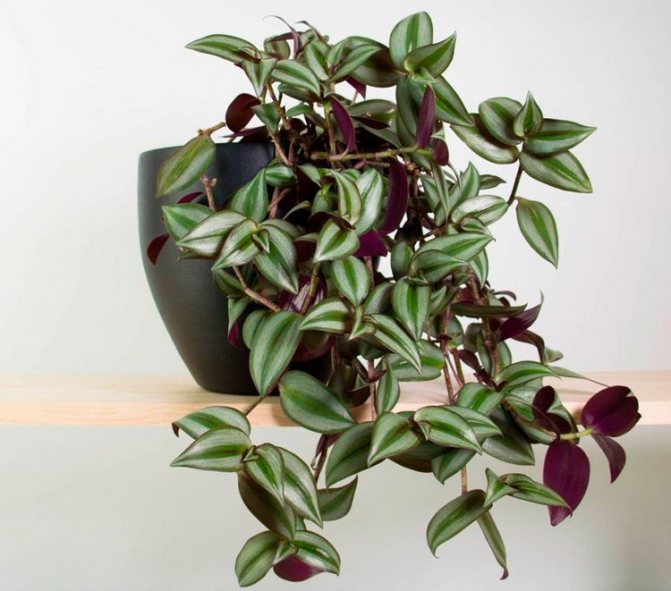

Pests and diseases
All types of tradescantia are quite strong and persistent, therefore, diseases rarely affect them. However, do not forget that this is also a living organism, which has its own vulnerabilities. Usually Zebrina is affected by aphids, thrips, scale insects, spider mites and others. Aphids prefer only young shoots. The rest of the pests live on both sides of the leaves, which leads to their death.
To defeat pests, you need to use special insecticides that will completely help get rid of such troubles.
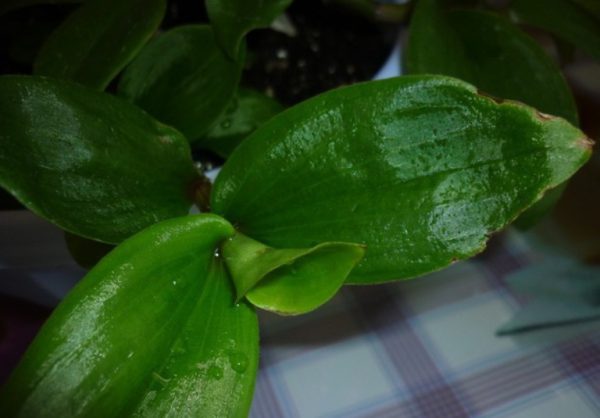

To do this, the first thing to do is to remove the pests with a damp sponge dipped in water or soapy water. This must be done on both sides of the sheet.
Note! Frequent inspection of the plant will help avoid wilting and death. If the damage is small, then use soap suds, in case of larger damage, use an insecticide.
Problems that the appearance of the plant will tell about:
- few leaves - not enough light, feeding and water;
- the color of the leaves is the same - there is little light;
- leaves are yellow, ugly, lethargic - little water;
- the ends of the leaves are dry, the color is yellow - the air in the room is too dry.
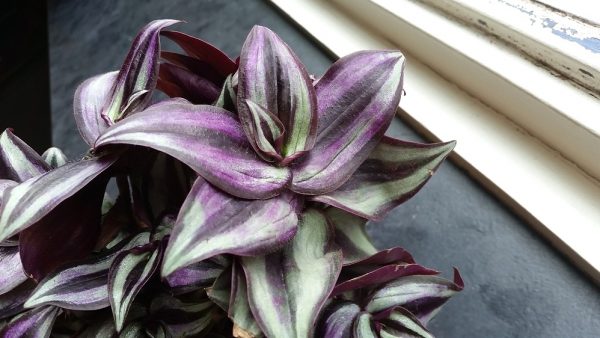

Planting and Care - Video


The homeland of the zebrina is the humid tropics, it was from there that it gradually crawled into human housing and won a special place not only on the windows, but also in the hearts of flower growers. This flower is not as simple as it might seem at first glance. At its core, Zebrina is a Tradescantia, while occupying a separate niche among indoor plants.
Zebrina, despite its belonging to Tradescantia, is very different from her. The first striking difference is, of course, the presence of charming stripes. Actually, thanks to them, the flower got its name. The second thing that distinguishes zebrina is the presence of a whole bunch of healing properties. Zebrina is a real indoor green doctor in a flower pot. She, along with such healers as aloe, Kalanchoe, golden mustache and geranium, helps with many ailments. In addition, it is a natural air purifier as well as chlorophytum, tradescantia, again geranium and spathiphyllum. Zebrin leaves have antibacterial properties, help with burns, are used in the treatment of stomach ulcers and have other properties.
Zebrina can be called a psychic in terms of choosing a place, her appearance will immediately show bad areas in the room, she will turn pale and wither. There is an opinion among the people that zebrina has the power to bring peace of mind to the house, improve relations with family and friends.
Zebrina is a real treat for younger brothers. Cats literally "graze" by the pots with this flower. Rodents, turtles and even poultry are very fond of zebrins. They probably know a lot about self-medication.


